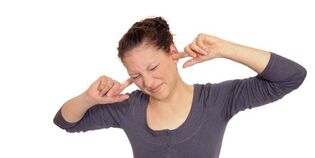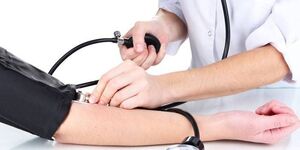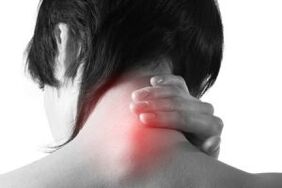The diagnosis of osteochondrosis, in my opinion, is not as sad as discirculatory encephalopathy and vascular-vegetating dystonia. Yes, in "osteochondrosis" we and abroad understand completely different pathologies. Outside - these are serious skeletal injuries, especially in children. With us, just complain about neck pain, do an x-ray or MRI (where there will certainly be degenerative changes) - and here is the diagnosis of osteochondrosis.
The main causes of back pain
In most cases, the patient is diagnosed with osteochondrosis with back pain. But in reality, the reasons are different:
- Nonspecific back pain
Caused by muscles, ligaments, tendons. It does not require magnetic resonance. This is the most common cause of back pain and the most favorable option, because doctors often prescribe a very suitable therapy - non-steroidal anti-inflammatory drugs, muscle-relaxant drugs, exercise therapy. It should be noted that, for chronic pain lasting more than 3 months, completely different medications are needed. - A very rare cause of back pain. You're suprised? And if a hernia was found on an MRI and the back hurts, isn't the hernia the cause of the pain? In most cases, no. In hernia, in addition to pain, other symptoms must occur: weakness of some muscles, decreased tendon reflexes, decreased sensitivity in the root innervation zone. There are no such symptoms - you can forget about the hernia as the cause of the pain.
Serious causes, except for pain and other symptoms, are excluded based on MRI.
It is much worse when the diagnosis of osteochondrosis is made with completely different complaints: increased pressure, dizziness, weakness, anxiety, headache. What should we exclude in this case?
- Tension headache and migraine.
Not related to your neck. Healing the neck means taking the wrong path, bringing chronicity closer to your pain. Tension headache may be accompanied by muscle tension, but it is still a tension headache, not osteochondrosis. - Dizziness
Not due to the acute blues. The real causes of dizziness: benign paroxysmal positional dizziness, vestibular data injuries, vestibular migraine, Meniere's disease, vestibular paroxysm, cerebellum and trunk pathology, psychogenic dizziness, iron and vitamin B 12 deficiency, heart disease, lung disease anda lot more. - Arterial hypertension.
Sometimes I find the opinion that if a patient's blood pressure increases, their neck and, of course, the neck vessels must be checked. Did you find arterial hypoplasia, tortuosity, degenerative changes in the cervical spine? We will blame them for the increased pressure. This is absurd. In reality, there is no connection between the increased pressure and the neck. - Depressive Anxiety Disorders.
Do you have anxiety, dizziness, weakness and fatigue, sleep disorders? Come on Benin neck again. And the poor patient, instead of consulting a psychiatrist with antidepressants and tranquilizers, receives physical therapy, massage and some type of homeopathy. - Iron deficiency, thyroid dysfunction.
Always keep in mind when you complain of fatigue, weakness, decreased concentration, dizziness, headache.
Changes occur in our body over the years. The baby's skin is soft and elastic. At 30, no matter how much we resort to aesthetic procedures, she is no longer like that. Imagine a sailor who has spent his life sailing: his skin is rough and wrinkled. The same thing happens with our column. In most cases, bumps and hernias are natural age-related changes. If there are many provocative factors in your life, for example, carrying heavy loads, the likelihood of having a large hernia increases.
Numerous studies have established that disc protrusions are found in healthy people: at age 20 - up to 40% of those examined (remember, they are patients without back pain), at age 70 - up to 90%. In addition, the severity of changes in MRI is not related to the degree of pain syndrome: with a large hernia, there may be no pain at all, and with small bumps, the patient may experience severe pain (because the cause is not in the bumps), but in something else).
A hernia never hurts?
Of course, yes! In about 1-4% of all cases of back pain. How do you recognize this? The hernia leads not only to pain, but also to other disorders: impaired sensitivity, changes in reflexes and, sometimes, decreased muscle strength. All of this is determined by a competent doctor during a neurological examination.
If the muscle strength is sufficient, the reflexes when hitting with a hammer are symmetrical, not weakened, there are no sensory disturbances, then it is extremely unlikely that the back pain is caused by a hernia.
Also, by squeezing the spinal root to a certain level (if you read the MRI results, you will see that the bumps and hernias are described in the level, for example, C3-C5 or L5-S1), the hernia causesnot only a decrease in sensitivity anywhere, but also in certain segments and modifications strictly defined in reflexes. The neurologist correlates the level of the lesion with the MRI data.
Classification of symptoms of cervical osteochondrosis
The development of this disease sometimes occurs before the age of 30-35, so the signs of the disease can appear even in adolescence. The signs of cervical osteochondrosis are discussed in detail below, the disease has become a real problem in the modern world. Sedentary work, prolonged stay in front of the computer negatively affect a person's health and well-being. All symptoms of cervical osteochondrosis are associated with the malfunction of several systems:
- In advanced cases, there are signs of compression, the integrity of the spinal cord located in the spinal canal is compromised.
- The pathological nervous process is capable of influencing the peripheral system. The roots of the spinal cord, located near the foci of deformation of bone and cartilage tissue, are negatively affected.
- In some cases, compression of the vertebral arteries may occur. These blood vessels supply nutrients, oxygen, to brain cells. The violation of these processes leads to a serious deterioration of human well-being.

It is known that one of the first signs of the development of the disease is pain in the cervical spine. At first it passes quickly, it is periodic, but then it becomes chronic. The main pain localization sites are:
- occipital muscles (intensified by turning the neck, tilting the head);
- shoulder area; neck
- .
It can hurt in different ways, depending on the location of the injury, the discomfort can be acute, sharp, periodically decrease, be painful and constant. Over time, head movements become more difficult due to tension in the neck muscles. If an artery is clamped, sometimes a cervical migraine is observed (with weakened blood supply, lack of oxygen, a headache appears).
Nausea
In some cases, the vessels of the circulatory system are compressed, supplying oxygen and nutrients to the human brain and the inner ear. Because of this, nausea occurs with osteochondrosis. This symptom is accompanied, as a rule, by loss of appetite, which causes weight loss, deficiency of necessary nutrients. In advanced stages, the disease can cause vomiting when you turn your head, walk or bend over. This is due to the lack of blood supply to the middle ear, where the center of balance is.
Neurological symptoms of cervical osteochondrosis
Some manifestations of the disease may not be immediately attributed to characteristic signs. You should know which symptoms of cervical osteochondrosis cannot be ignored, for example, shortness of breath. If this section is damaged, phrenic nerve irritation syndrome can develop. The patient has difficulty breathing, lack of oxygen, which causes shortness of breath and even severe suffocation.
This manifestation of pathology is often accompanied by snoring, it intensifies if you take an uncomfortable position while sleeping. This leads to the fact that the person does not rest at night, wakes up with a feeling of general discomfort, weakness, feeling tired and overwhelmed. This condition, if left untreated, can lead to impaired memory, decreased concentration and irreversible changes in brain tissue.
Vestibular signs
Another direction, such as osteochondrosis of the cervical spine manifests itself - vestibular signs. The supply of the brain with all the necessary nutrients occurs through the vertebral arteries. If cervical chondrosis develops, in which the inner ear is ruptured, the patient will experience tinnitus and tinnitus. In certain cases, hearing loss or impairment is added to these symptoms.

lump in the throat
In some cases, the disease manifests itself in only one symptom - pharyngeal. There is a feeling that a lump has formed in the throat with osteochondrosis of the cervical spine, there is sweating, itching, dryness, it is difficult to swallow. These manifestations are associated with impaired conductivity of the neurovascular trunks that emanate from the spinal cord. A lump in the throat is not a specific symptom of chondrosis; may indicate a tumor or inflammatory process. When this symptom appears, you should definitely see a doctor.
Visual signs of cervical osteochondrosis
Symptoms of chondrosis of the cervical spine may vary, but the most common are visual acuity disorders. The supply of visual analyzers occurs through the carotid and vertebral arteries. If there is a decrease in blood circulation due to compression, a decrease in vision starts, which does not improve with the use of glasses. Cervical osteochondrosis - symptoms:
- low blood pressure;
- floating and oscillating points;
- atherosclerosis of arteries in the brain;
- violation of focus on the subject;
- shroud, mist before the eyes.
A characteristic sign that there is a decrease in vision due to the pinching of a blood vessel by a vertebra, impaired blood circulation, will be the lack of improvement when wearing glasses, performing special exercises. Only timely treatment of the underlying disease (before irreversible tissue damage occurs) will help to change the condition.
Arterial signs

The spine plays an important role in the human body, so any disease affects many systems. There are certain arterial signs of cervical osteochondrosis that indicate this disease. This includes a sudden loss of consciousness. This is the most unpleasant and dangerous symptom inherent in this disease. This is due to impaired blood circulation, when blood temporarily stops flowing through the cerebral arteries.
Severe arterial spasm occurs due to the response of deformed bone processes to irritation of nerve endings. If your friend has osteochondrosis of the cervical spine and has lost consciousness, he should be lying down, with his legs raised at a slight elevation to increase blood flow to the limbs and increase the flow to the brain. After that, people tend to recover quickly.
Blood pressure instability is another symptom of this disease. Doctors can diagnose spasmodic indicators if the blood supply is interrupted. This is not a specific symptom of chondrosis, but it fits the general picture of the disease. Blood pressure may drop or rise sharply. A person feels a deterioration in his condition, so he needs to guarantee peace.
Dizziness
Previously, it has been described that loss of consciousness sometimes occurs with this disease. This applies to cases where blood flow to the brain was very difficult. Most often, patients experience dizziness with cervical osteochondrosis. This is a common symptom that accompanies all patients with this disease. This phenomenon has a spontaneous manifestation. This condition is caused by a reduction in the amount of oxygen delivered to the inner ear. It is located in the human brain and is responsible for the sense of balance. Dizziness occurs when:
- turn your head, neck;
- if you suddenly get out of bed.

Temperature in osteochondrosis
In some cases, pathological processes spread between the structures of the cervical segment of the spinal cord. This happens with disc protrusion, canal stenosis. The temperature in osteochondrosis is the body's response to these pathologies. The same reaction is possible with vertebral artery syndrome. This is a common occurrence in osteochondrosis in the later stages of the disease's development. Therefore, the increase in temperature refers to nonspecific symptoms of the disease.
This symptom will not necessarily be present, the body thermoregulation may be normal. If you feel constant pain in the neck, shoulders, neck and when you turn or tilt your head, there is an aggravation, you should consult a specialist and have an examination. The lack of treatment will certainly lead to the fact that the condition will worsen, the level of comfort of life will decrease.
Learn more about what to do when you are diagnosed with osteochondrosis of the cervical spine.
Symptoms of cervical osteochondrosis
Cervical osteochondrosis is a lesion of the vertebral discs of the cervical spine, as a result of which they undergo degenerative dystrophic changes. The main reason for its development is a violation of the normal course of metabolic processes, which leads to a distortion of the structure of the vertebral bodies and cartilaginous discs. In the case of neck location, the symptoms of the pathology are largely determined by the compression of large vessels. The treatment methods are selected according to the stage, the specificity of the course, the severity, the main symptoms.
Characteristics of the disease
The cervical form is the most dangerous type of osteochondrosis: it leads to a deterioration of cerebral circulation, as the vertebral artery passes through this area - one of the largest vessels that supply the brain with essential substances and oxygen.
Displacement of vertebrae, abnormal changes and excessive growth of bone and fibrous tissue disturb the normal functioning of the vessel.
The specificity of osteochondrosis symptoms in this part is determined, among other things, by one of the structural characteristics of the cervical vertebrae, which consists in their greater adherence to each other. As a result, any change in a segment causes the entire department to fail.
Clinic depending on the stage
In the process of its development, cervical osteochondrosis goes through four stages. How does this manifest in each of them?
- Stage 1. It is characterized by the appearance of initial disturbances in the stability of the intervertebral discs. Symptoms are mild or absent. Not very pronounced pain sensations and local muscle tension are possible.
- Stage 2. The protrusion of the disc begins, the gaps between the vertebrae are reduced, the fibrous ring collapses. In many cases, as a result of the compression of the nerve endings, pain arises - mainly of a punctual nature. They intensify when turning, tilting the neck. The tone decreases, weakness often appears.
- Stage 3. The process of final destruction of the fibrous ring leads to the formation of hernias. This phase is characterized by a significant deformation of the spine. The increase in pain and fatigue occurs in the context of sensory disturbances and limited mobility in the affected area.
- Stage 4 is the most difficult. The severe pain syndrome manifests itself with any attempt at movement, which causes a significant limitation of mobility in this department. Sometimes the pain subsides, but this does not show an improvement in the condition, but only indicates an increase in the size of the bone growths, significantly limiting movement. They often lead to the patient's disability.
Symptoms of cervical osteochondrosis
When located in the cervical spine, the predominant symptoms of osteochondrosis are:
Pain is the main symptom
- pain in the cervix, occiput, shoulder, arms;
- movement restriction, crushing in several turns, neck bending;
- weakness in the hands;
- pulling the pain on the left side of the chest, radiating to the corresponding arm;
- burning in the interscapular zone;
- recurring headaches;
- weakness;
- dizziness (with a severe course of cervical osteochondrosis, can cause loss of consciousness);
- the coordination of movements is impaired, which is mainly reflected in gait;
- hearing loss, ringing in the ears;
- reduced vision;
- sore throat;
- poor dental health;
- weakening or hoarseness of the voice;
- snoring is the result of tension in the neck muscles.
In the cervicothoracic type, the symptoms are almost similar to those of cervical osteochondrosis. This:
- asthenic syndrome;
- dizziness and headaches;
- periodic pressure fluctuations;
- flies blinking before the eyes;
- pain in the shoulder girdle and arms;
- muscle weakness;
- numbness, tingling, cold in the fingers;
- chest pain, heart area;
- nausea;
- numbness of the tongue, face;
- dental problems;
- sensation of current flowing along the arms when trying to bend the neck.
Syndromes
Symptoms of cervical osteochondrosis are not considered typical. Which one is more pronounced depends a lot on the specific target. Many of the manifestations may be mistakenly associated with other pathological conditions. Therefore, there are often cases where the wrong treatment is prescribed. The symptom complex is divided into the following groups:
- root; vertebral artery syndrome
- ;
- irritative reflex syndrome.
Root syndrome
His second name is cervical sciatica. The syndrome develops as a result of clamping nerve endings in the neck. The pain is transmitted from the neck, passing to the shoulder blades, going down along the shoulder along the outside of the forearm to the fingers. In this case, they usually appear:
- scary feeling;
- tingling in the hand, forearm, fingers; pasty
- .
Manifestations also vary depending on the area of the injury. If the central nerve endings are affected, the pastyness will extend to the thumb, middle and index fingers. When the brachial nerve endings are pinched, the little finger and the ring finger are affected.
Irritative reflex syndrome
Burning and acute pain in the cervico-occipital region, which arises during movement after a static state: after sleeping, when sneezing, a sudden turn of the head becomes its signal. Often, the pain radiates to the shoulder and chest.
Vertebral artery syndrome
The symptoms of cervical osteochondrosis are:
- throbbing or burning headache (paroxysmal or persistent in nature), extending to the temporal, dark, occipital region, superciliary arches;
- increased discomfort with certain movements or after a long time in an uncomfortable position;
- general weakness;
- nausea;
- loss of consciousness;
- hearing problems;
- vestibular disorders;
- eye pain;
- blurred vision.
Heart Syndrome
When this complex of osteochondrosis symptoms of the neck develops, a picture almost similar to that of angina pectoris appears, which often leads to an incorrect treatment. Muscle contractions and spasms in the heart region are most likely a reflex response to compression of nerve endings in the lower cervical region. Cardiac syndrome is a consequence of irritation of the phrenic nerve (its fibers lead to the pericardium) or the pectoralis major muscle:
- the pains appear suddenly, last a long time;
- aggravated by a sudden movement of the neck, coughing, sneezing;
- tachycardia and extrasystole are possible;
- the pain does not stop after taking coronary enlargement medications;
- there are no signs of impaired circulation on the ECG.
Exacerbation of the disease
In the exacerbation stage, the symptoms of cervical osteochondrosis are:
- increased pain and its irradiation to the shoulder blades, interscapular zone, arms, shoulders;
- Difficulty moving the shoulders, torso, arms, sometimes breathing (inhaling and exhaling);
- pain syndrome usually resembles a heart attack or intercostal neuralgia;
- when the pain appears in the right hypochondrium or in the iliac area, the clinic is similar to the manifestations of gastritis or cholecystitis;
- headaches are long-lasting, there is an imbalance in visual and auditory functions;
- in the innervation area, the skin's trophism is disturbed, tingling, numbness, dryness, pallor, burning, cold appear;
- the tone of the cervical muscles increases;
- weakness, lethargy, nervous tension, anxiety, emotional instability appear;
- possible sleep disorders, memory disorders and concentration problems.
How the disease is diagnosed
The main methods of diagnosis of cervical osteochondrosis are:
- radiography;
- magnetic resonance imaging;
- computed tomography;
- Doppler ultrasound; duplex scanning
- .
The last two methods are used to check the condition of the neck vessels.
Signs of cervical osteochondrosis
The cervical spine contains a large number of blood vessels that provide nutrition for the brain. Therefore, any neck problems, including cervical osteochondrosis, can lead to a deterioration of the blood supply to the brain. So - and the most common signs of cervical osteochondrosis:
- regular headaches and dizziness,
- occasionally - fainting,
- impaired movement coordination, appearance of "laxity" in walking,
- hearing loss, ringing in the ears,
- visual impairment,
- the appearance of dental diseases,
- the appearance of hoarseness in the voice, changing the timbre of the voice, its weakening,
- snoring,
- persistent sore throat.
Other symptoms of cervical osteochondrosis include a feeling of coldness in the fingers, numbness, weakness in the arms, pain in the neck and shoulders, often accompanied by dizziness and nausea.
How to treat this disease
Osteochondrosis of the cervical spine, symptoms and treatmentdepend on the patient's condition, the severity of the disease, the nature of the injury to the cervical vertebrae.
- In the acute period, hospitalization and medication may be necessary.
Generally used painkillers, novocaine muscle block, muscle relaxants, muscle spasm relief; chondroprotectors for cartilage tissue nutrition; sedatives that calm the nervous system, B vitamins that increase neuromuscular conductivity.
Treatment of osteochondrosis of the cervical spine is always long-term and should be comprehensive.
- During periods of remission, when there are no acute symptoms, physiotherapy methods (electrophoresis, ultrasound, etc. ) are widely used, physiotherapy, massage, as well as non-traditional procedures, such as acupuncture, are necessary.
There are many conservative treatments for osteochondrosis that can halt the progression of the disease. However, each patient needs an individual course of treatment, taking into account the stage of the disease, the characteristics of the organism, sex and age.
The objective of the treatment of cervical osteochondrosis is:

- Elimination of pain and swelling at the inflammation site.
- Relaxation of tense neck muscles.
- Release of compressed nerve roots.
- Better blood circulation.
- Activation of metabolism.
- Improving the nutrition of intervertebral discs.
Complex targeted treatment can prevent the occurrence of protrusions and intervertebral hernias.
In order not to startosteochondrosis of the cervical spine, symptoms and treatmentand to avoid serious complications of the disease, timely treatment should be started.






















